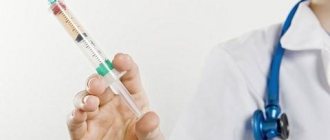Herbal medicine is a popular method of treating and preventing cardiovascular diseases. Let's figure out which herbs can increase blood pressure: a review of commonly used medicinal plants, contraindications.
Before use, you should consult your doctor, since many plants enhance or weaken the effect of antihypertensive drugs. This causes side effects or health-threatening complications.
Licorice root (licorice)
Contains glycyrrhizin, a chemical used as a sweetener and medicine. Strengthens the effect of glucocorticosteroid drugs, slows down the excretion of fluid, which is why blood pressure begins to rise.
Licorice roots for hypotension can be consumed for no more than 14 days, since an increase in the amount of sodium and water can cause swelling. For low blood pressure, it is recommended to drink freshly brewed tea in the morning. 20 g of dry herb is poured into 200 ml of boiling water. Let it sit for 20 minutes and drink.
You should not use products based on licorice root if you have kidney disease, liver disease, a tendency to bleeding, or thrombocytopenia.
Advice for hypotensive patients
If you have low blood pressure, it is advisable to drink strong tea and coffee. It is better for the coffee to be natural, brewed immediately before ingestion. This drink has good tonic properties.
In addition, you need to include as many fresh fruits and vegetables, as well as herbs and grains in your diet. Drinks you should drink are herbal infusions, tinctures and decoctions.
Instead of sugar, it is better to add natural honey to tea and coffee. It is useful for various diseases (including hypotension and hypertension), and also strengthens the immune system.
Ginseng
The herb containing saponin glycosides increases blood pressure and has an adaptogenic effect. Regular consumption of ginseng stimulates the central nervous system, improves mental and physical performance, and lowers cholesterol levels.
Contains antioxidants that neutralize free radicals and reduce the risk of chronic diseases of internal organs.
For low pressure use:
- Alcohol tincture. 20 g of crushed root is poured into 0.5 liters of vodka. Infuse for 5 days, shaking the tincture twice a day. Take 30 drops 3 times a day before meals. You can buy a ready-made tincture at a pharmacy.
- Tea. 1 tbsp. l. ginseng root is poured into 300 ml of cold water. Place on fire and bring to a boil. Next, reduce the heat to low and simmer the broth for 20 minutes. Drink only in the morning, 100 ml. You can add dates, ginger, sugar itself causes an increase in blood counts.
- Ginseng with honey. Fresh root is crushed with a blender or meat grinder. Mix with liquid honey, proportion 1:9. Leave in the refrigerator for a month. Take 2 tsp of the finished mixture. twice/day.
The general course of treatment with ginseng lasts 2-4 weeks. Then they take a two-week break, after which the therapy can be repeated.
Long-lasting means for normalizing blood pressure
To achieve a lasting effect, patients need to take folk remedies for hypotension for a long time. This will help stabilize indicators without drugs and restore people’s vigor and vitality.
Components How to prepare the product How to take the product Lemon, honey You need to take six medium lemons and 500 mg of natural liquid honey. The lemons are washed, ground in a meat grinder, and then one liter of boiled water, but not hot, is added to the resulting mixture. We put the mixture in the refrigerator for a day, and after a day add 500 ml of honey. The resulting mass must be stirred to a homogeneous consistency and placed in the cold for another 72 hours. After preparation, this product is eaten at 50 grams. three times a day before meals. As soon as the pressure normalizes, you can only take the morning dose for prevention. Amosov’s mixture - honey, dates, dried apricots, walnuts, two types of raisins To prepare the well-known remedy, you need to take all the components in equal parts, except honey. All components are twisted in a meat grinder into one bowl, and then honey is added. The amount of honey is not strictly specified; it is necessary to put so much so that the mixture is not too liquid or too thick. Amosov’s mixture is consumed daily, one tablespoon in the morning. It is advisable not to spread it on bread and drink it with tea, but to eat it without any additives. When the required pressure figures are reached, the mixture is taken as a preventive measure, a teaspoon twice a week; if the pressure begins to drop, the volumes are increased. Licorice root, panaceria fluffy, string, buckwheat - 10 g each, valerian root All ingredients must be combined in one dishes and mix thoroughly to obtain a homogeneous mass. Then five tablespoons of dry herb are taken into a small enamel saucepan and filled with a liter of water. When the mixture boils, it is poured into a thermos and left for ten hours. Afterwards, the cake is removed. The product is divided into three times and drunk half an hour before each meal. Calamus root - 1 part, gorse - 2 parts, verbena leaves - 2 parts, oregano herb - 4 parts, mint leaves - 2 parts, St. John's wort - 14 parts, fireweed - 4 parts, rose hips - 6 parts, knotweed - 2 parts. To prepare the product, you need to combine all the components in one bowl, mix until smooth and pour three tablespoons into a separate container. The dry component is poured with two glasses of boiling water and left for a day. After the cake is filtered, the product is ready for use. The resulting dose of the product is 400-450 ml, which must be drunk during the day in several doses. It is recommended to drink the product half an hour before meals. Chinese Schisandra, vodka The highly detailed fruits of Chinese Schisandra must be poured with vodka in a ratio of one to ten and left to infuse in a dark place for fourteen days. Shake the container from time to time. You need to take the product thirty drops at a time, adding drops of the product to a tablespoon of water so that it is not bitter. The medicine is taken twice a day. For faster action, you can increase the dose by ten drops.
Eleutherococcus
An herb that contains biologically active substances ginsenocides, which gently increase blood pressure, normalize heart function, and maintain vascular tone. Used to treat nervous disorders, improves memory and concentration.
For low blood pressure, take an alcohol tincture. Dosage: 20-30 drops once a day (no later than 12 noon). The course of treatment is limited to 3 weeks.
Schisandra
Stabilizes blood pressure, improves the condition of chronic hypotension. The herb improves work capacity, maintains vascular and muscle tone, and stimulates the heart.
The greatest hypertensive effect is exerted by:
- Berry decoction. 50 g of dry fruits are poured into 300 ml of water, boiled over low heat for 10 minutes after boiling. Take in the morning, after lunch, 1 tsp. Course – 2 weeks.
- Alcohol tincture. For 5 parts alcohol take 2 parts dry berries. Keep for 3 weeks in a cool, dark place. Take 20 drops in the morning. Treatment lasts a month.
- Lemongrass with honey. Dry fruits are ground into powder with a coffee grinder. 50 g of raw materials are mixed with 3 tsp. honey, 30 g sugar. From the resulting mass you need to form 50 small balls. Then put in the freezer for 15 minutes. Eat 2 balls daily. Course – 25 days.
Always at hand
And we will continue to talk about how to increase low blood pressure using folk remedies. If measures are not taken in time, the consequences can be severe. Following lethargy and apathy, a person begins to experience a lack of air even at rest, shortness of breath occurs, in women the menstrual cycle is disrupted, and in men, sexual function is disrupted.
Celery root can lift it well. To do this, you need to eat it in the form of salads. Celery is not a delicacy for everyone; some people don’t like it at all, but if you take it as a medicine, then you can easily tolerate it. Therefore, plant a useful plant in your summer cottage. Fresh strawberries are another natural helper, so try to consume them as often as possible during the season.
But the number one choice, which is definitely in every home, is the most common onion. To combat hypotension, onion decoction is prepared. To do this, two large heads (along with the peel) need to be filled with a liter of water, added 100 g of sugar and boiled over low heat for 15 minutes. Take the resulting raw materials for several weeks, 100 g per day. This amount is distributed throughout the day. Gradually the pressure stabilizes.
Rhodiola rosea (pink root)
The action is similar to ginseng. Aboveground and underground parts of the herb are used to treat cardiovascular and gastrointestinal diseases.
Stimulates the functioning of the central nervous system, recommended for hypotensive patients with severe fatigue, mental fatigue, and vegetative-vascular dystonia.
For low blood pressure, take a liquid extract. Dosage – 5-10 drops 3 times/day, duration of treatment – 20 days.
Ginger
Contains strong antioxidants - gingerol, shogaol, zingerone. Used for cholesterol metabolism disorders, restores the tone of blood vessels. Able to increase and decrease pressure (but only with a slight increase to 150/110 mm Hg).
For low blood pressure, drink ginger tea. Add 1 tsp to 200 ml of hot black or green tea. ginger root powder. Drink 1 cup twice a day. The course of treatment is 7 days.
Contraindications for use
The following contraindications can be identified that prohibit the use of herbal medicine to normalize blood pressure:
- the functioning of the heart and blood vessels is disrupted;
- severe excitability;
- light sleep, no deep sleep phase;
- infectious diseases of acute or chronic form;
- individual hypersensitivity to certain medicinal herbs.
The use of herbal medicine by women during pregnancy and breastfeeding is strictly prohibited. You should definitely contact a gynecologist and pediatrician who will assess the need and benefits of such therapy. Herbal medicine is contraindicated for children under 10 years of age.
Herbal treatment is contraindicated for young children
St. John's wort
A well-known medicinal herb that increases blood pressure and improves the functioning of the cardiovascular system. St. John's wort has strong anti-inflammatory and astringent properties.
For low blood pressure, an infusion is prepared from flowers, stems, and leaves. Take 30 g of raw material per glass of boiling water and leave for half an hour. Drink 50 ml 3 times a day before meals for 14 days. Treatment can be repeated after a month's break.
It is strictly forbidden to increase the dosage or frequency of administration of the infusion. This can cause a sharp jump in blood pressure, causing a hypertensive crisis.
Indications for use
Herbs that raise blood pressure should be used by people with hypotension. For some people, low blood pressure is considered “working”, so they do not experience discomfort. Such patients are not prescribed medications or herbal treatment. The doctor will tell you which effective plants can cure blood pressure problems.
One of the main indications for the use of traditional medicine for blood pressure is lethargy, which is accompanied by several days, weeks or months, malaise, frequent headaches, blurred vision, dizziness, and fainting.
Important! To improve your well-being and normalize blood pressure, you need to combine medications with medicinal herbs.
If you follow all the recommendations, the increase in blood pressure and decrease in negative symptoms will occur gradually. Can reduce headaches and migraines. High dosages of herbal infusions can cause heart palpitations. Medicinal plants can calm the nervous system and improve the patient's condition.
Dizziness with progression of hypotension
Anise
Anise seeds are often used as a blood pressure lowering agent. However, they can also be useful for hypotensive patients. Anise is rich in minerals and B vitamins. It prevents the development of anemia, which provokes a decrease in blood pressure.
To normalize the condition, anise can be used as a seasoning, adding to main courses, first courses, or preparing a decoction. 1 tsp. seeds, pour a glass of boiling water, leave for 20 minutes, drink immediately. The decoction is drunk twice a day. The duration of treatment is no more than 3 weeks.
Rose geranium (pelargonium)
It has antidepressant, antiseptic, astringent properties. Stops bleeding, stimulates the adrenal glands, normalizes hormonal levels.
Essential oil improves well-being in case of hypotension and gently increases blood pressure. The aroma of the oil is inhaled twice a day for 1-2 minutes. The procedure is done for 7-10 days in a row.
Leuzea
An herb whose root has a healing effect. The plant increases blood pressure, improves physical condition, restores strength, eliminates drowsiness and fatigue.
The pharmacy option is easier
An infusion is prepared from Leuzea root. For 500 ml of water use 3 tbsp. l. raw materials. Bring the infusion to a boil and boil for 5 minutes. Take 3 times/day, 1 tbsp. l. Course – 3 weeks.
Hawthorn
It is recommended for hypertensive patients to reduce blood pressure. However, flowers and leaves have a cardiotonic effect: they dilate the vessels of the heart and brain, eliminate heart pain, normalize heart rhythm and venous circulation.
For hypotension, hawthorn is used as an adjuvant in the complex treatment of cardiac disorders. An infusion is prepared from flowers and fruits. Take 1 tsp per glass of boiling water. inflorescences, 2 tsp. berries Leave for 2 hours, drink an hour after meals, once a day.
The water infusion normalizes blood pressure, has a slight tonic effect, and improves the condition of hypotensive patients. It is not advisable to take the product for more than 3 weeks.
Beneficial features
In addition to its vasodilating effect, ginseng helps improve metabolism, saturate the blood with oxygen, and accelerates systemic blood flow.
Active substances
The plant contains steroid compounds close to triterpenes, as well as glycosides. The following components help minimize the manifestations of hypotension:
- ginsenosides have a stimulating effect on the vasomotor center of the brain;
- Panaxen, panaxanoic acid - accelerate glycogen synthesis, takes part in the prevention of atherosclerosis.
Herbal infusions
For frequent surges in blood pressure and chronic hypotension, it is better to use medications that have a tonic effect.
The most effective herbal combinations:
- Mint, lemongrass berries, aralia, eleutherococcus, proportion 1:1. Add 20 g of the mixture to a glass of boiling water. They insist for half an hour. Drink 2 times, after breakfast and lunch.
- Mix 20 g of ginseng, astragalus, hawthorn inflorescences, chamomile, and horsetail ephedra. 30 g of the mixture is poured into 250 ml of boiling water and allowed to stand for 30 minutes. Drink 50 ml every 4 hours, but not more than 6 times a day.
- Take 2 tbsp. l. St. John's wort, chamomile, nettle. 60 g of the mixture is poured with a glass of boiling water and left for 30 minutes. Drink in the morning and during lunch.
- 1 tbsp. l. fruits of hawthorn, lemongrass, chamomile are mixed with 2 tbsp. l. knotweed, leuzea (can be replaced with bearberry). Take 20 g of the mixture per glass of boiling water. They insist for half an hour. Take 100 ml 2 times a day.
For hypotension, herbs are used that improve blood flow and enhance vascular tone. They need to be taken in courses of 2 to 4 weeks, using one prescription.
After treatment, take a break of 2 weeks. Then the therapy can be repeated. But it is better to use another collection so that there is no addictive effect.











